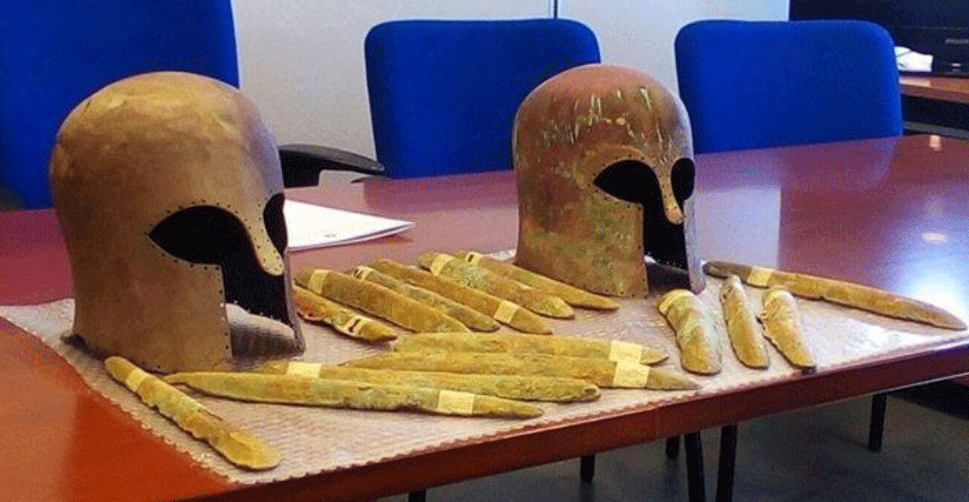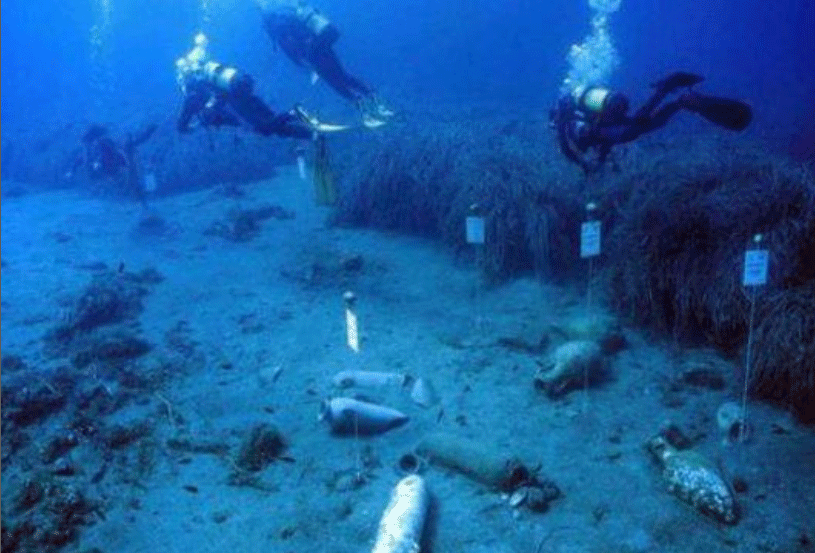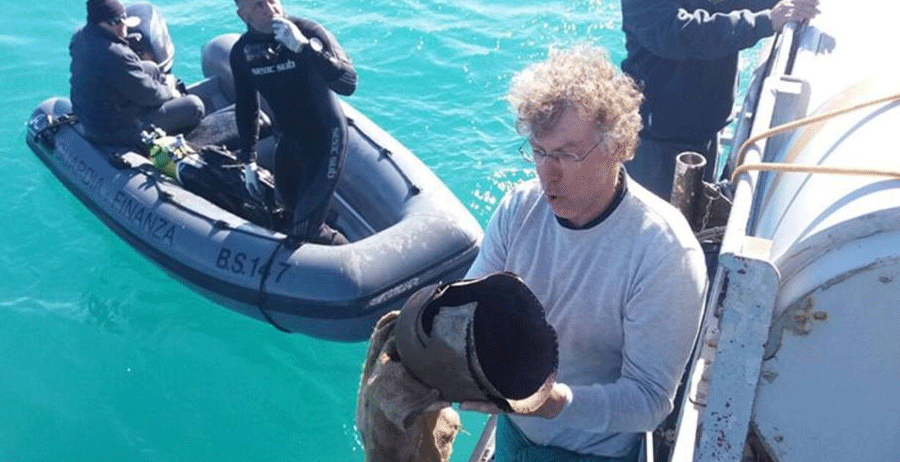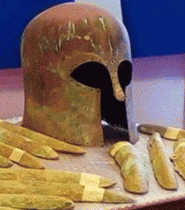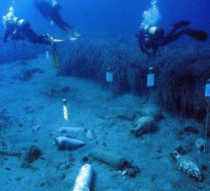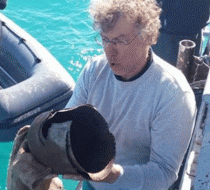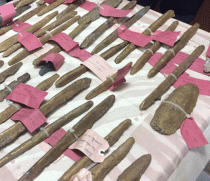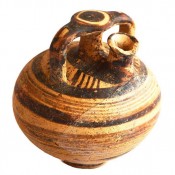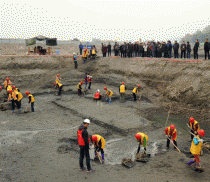Underwater archaeologists have discovered orichalcum ingots, a Massaliote round-bottom flask and two Corinthian bronze helmets off the Sicilian coast, investigating a shipwreck that had yielded similar finds in December 2014.
The 47 ingots were discovered about a month ago and came as an addition to the 39 orichalcum lumps that had been found at the same location, from the same shipwreck about two years ago.
The ship had sunk 2,600 years ago, off the coast of Bulala, near the ancient city of Gela in southern Italy probably due to a storm while it was about to enter the port, according to Sebastiano Tusa, an archaeologist from Sicily’s Superintendency of the Sea. Two more archaic shipwrecks have been found in the same area.
The total of ingots retrieved from the shipwreck establish the value the alloy had in ancient times, considered precious only second to gold.
The ingots found were examined with the use of X-ray fluorescence by Dario Panetta of TQ – Technologies for Quality, a scientific instrumentation company, and the results of the tests showed that the alloy is made with 57-80% copper, 15-20% zinc and small proportions of nickel, lead and iron. In antiquity the alloy was made by cementation. The items vary in shape, weight and length, from 17cm to 32cm and 254gr to 1340gr.
Scientists believe the ship that carried the items was travelling from Greece or Asia Minor to Gela, which at the time was a wealthy city with various workshops producing valuable artefacts, to be used for adornments or decorations.
Archaeologists also found two Corinthian bronze helmets, a rather common feature in shipwrecks of the time, since helmets and weapons were used against pirate attacks. They might also have been used as an offer to the gods.
